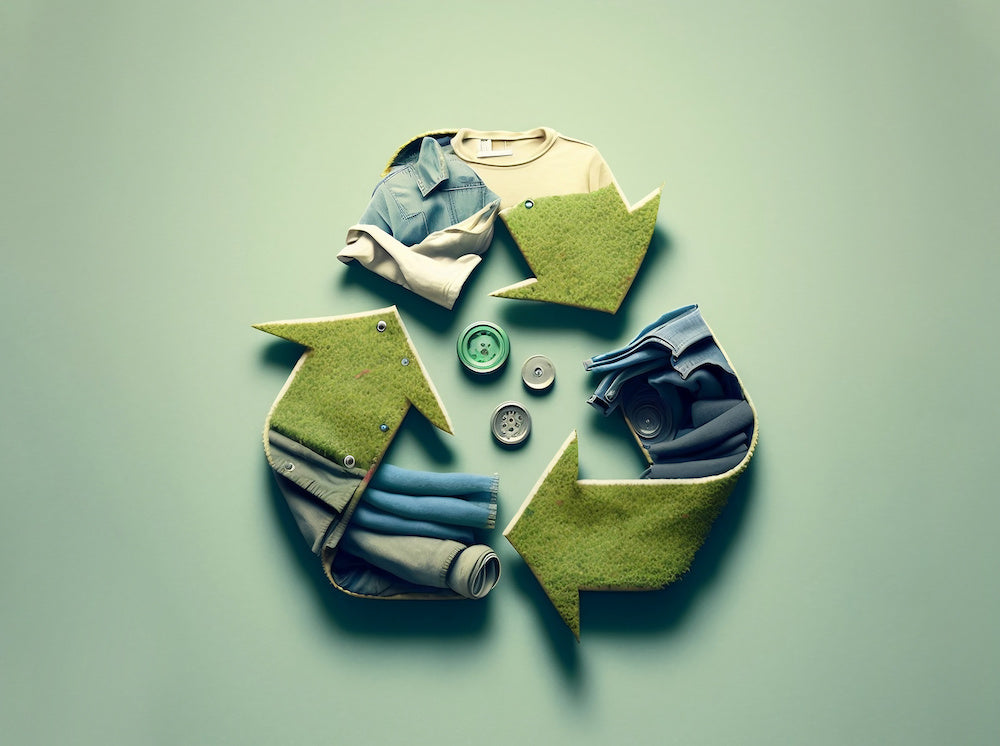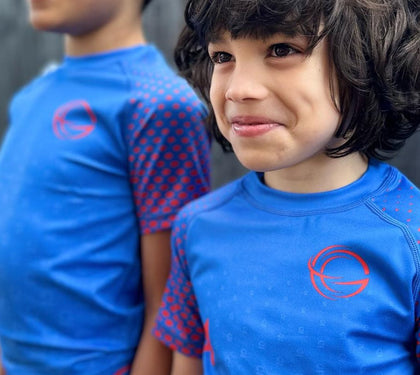We know we’ve said it a lot, but at RAINE Clothing, we really do believe that sustainable fashion should be something everyone is able to take an interest in and learn about.
Whilst we recently shared some of the barriers to slow fashion that are currently preventing eco-friendly clothing from being completely accessible, we think sharing as much as we can on the subject and demystifying some of the practices around sustainability is one of the first steps in making sustainable clothing more readily available in future.
That’s why, today, we wanted to share some of the terms we think you need to know if you’re seriously considering making more sustainable clothing choices – we bet there’ll be some you haven’t heard before, even if you already take an interest in eco-friendly clothes!
1. Reclaimed fabric
Simply put, reclaimed fabric is any leftover material that isn’t being used by a company or factory to make clothing, and is destined for destruction, either at a landfill or through some other destructive process, but is instead rescued with the intention of it being reused. Some eco-friendly companies specialise in creating garments using these techniques, whereas some offer clothing made from reclaimed fabric in special, one-off collections; either way, they’re preventing the waste of a considerable amount of usable fabric!
Given that much unused fabric can be chalked up to over-ordering, or cancelled and amended designs, reclaiming this material has the potential to make a huge impact on waste in the fashion industry!
2. The ‘thirty wears test’
The ‘thirty wears test’ or ‘thirty wears challenge’ is a pretty simple concept; it’s the idea that, ideally, for every piece of clothing in your wardrobe, you should be able to wear it (or have worn it) at least 30 times, in order for it to be a considered purchase, in line with a more sustainable method of shopping. This test is great for those who may not be able to always shop sustainably, or are just starting out on a more eco-friendly clothing journey, as all you have to do, whilst shopping, is consider whether you’re likely to get 30 wears out of the item you’re considering purchasing. If so, it’s more in keeping with a slow fashion approach to clothing, and therefore offers a slightly more sustainable alternative to a more ‘fast fashion’ purchase, which tends to involve clothing that is highly trend-led, or not of good enough quality to last through several wears.
Try it, next time you’re looking for something new to wear – you’ll be surprised at how much this one practice can alter your shopping habits!
3. Circular fashion
If you’re a regular reader of the RAINE Clothing blog, you’ll likely already know all about circular fashion from our blog post on the topic, but if you’re new around here, let us give you a quick run down of exactly what this term means: at its simplest, circular fashion means prioritising the durability and sustainability of a garment at each stage of its production, from design to production. In practice, this means that the sustainability of the fabric and production method, as well as the wearability of the design of any given garment needs to be considered before it is made.
4. Greenwashing
When fast fashion, high-street brands come out with selected ranges of more eco-friendly clothing, this is usually considered to be ‘greenwashing’; this practice means that a company may focus on one or two areas to improve their sustainability credentials, but without actually considering the harm the rest of their business is doing to the environment. Usually, companies who are accused of ‘greenwashing’ certain products or ranges are thought to do so because of the often higher price point of eco-friendly clothing, making these kind of ranges more profitable, especially when typically cheaper fast-fashion practices are used to create and deliver the products themselves.
5. Biodegradable
A product that is biodegradable is one that, over time, can disintegrate in a natural environment due to microorganisms, and can therefore be rendered into a completely harmless compound. This is not to be confused with a material that is compostable – if you’re not sure of the difference, you can take a look at our blog post on the subject.
We hope you’ve found this piece on some of the top terms you need to know to up your eco-friendly and sustainable clothing knowledge helpful! Are there any terms you’re not sure about? Let us know in the comments!

























